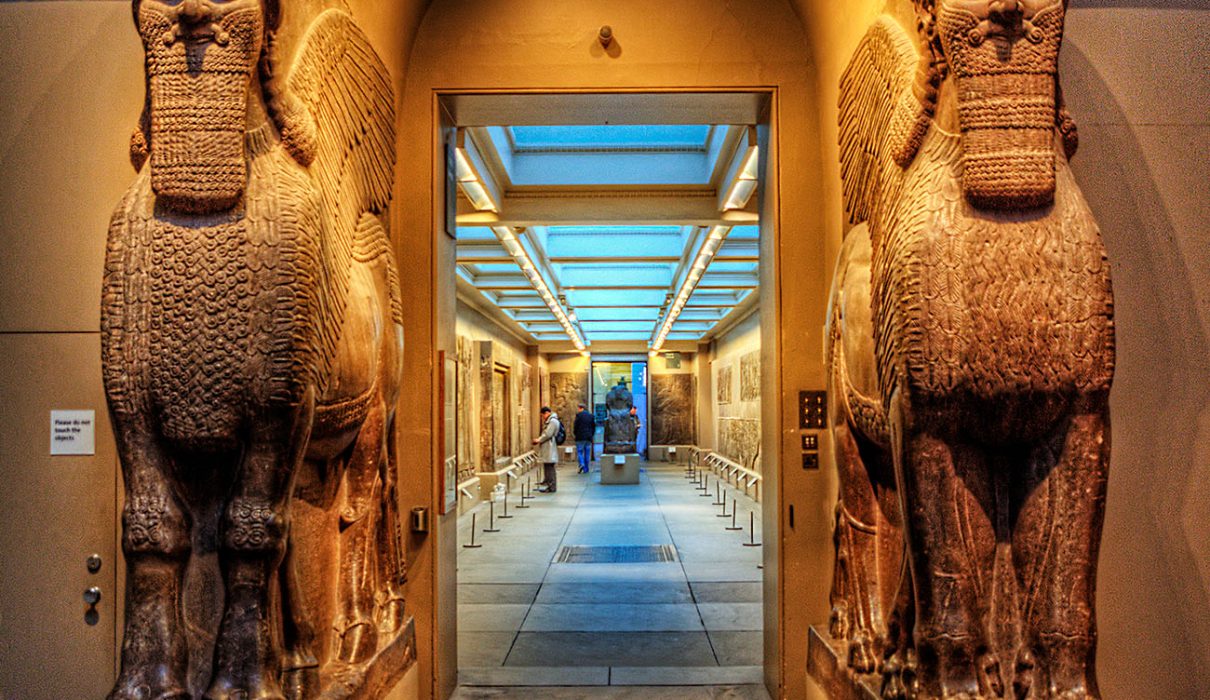The British Museum in London is one of the world’s most renowned cultural institutions, celebrated for its extensive collection of art and historical artifacts from around the globe. The museum offers a rich tapestry of human history and creativity, from the enigmatic Rosetta Stone to ancient Egyptian mummies. This comprehensive guide will take you through the museum’s history, key artifacts, and practical visiting information to ensure you maximize your experience.
History of the British Museum
Founded in 1753, the British Museum in London, England, is one of the world’s oldest and most prestigious museums. The museum was established by Sir Hans Sloane, a physician and collector who bequeathed his extensive collection of antiquities, books, and natural specimens to the nation. Initially housed in Montagu House, the museum moved to its current location in Bloomsbury in 1857. The iconic neoclassical building, designed by Sir Robert Smirke, is a masterpiece in itself, reflecting the grandeur of the institution.
The British Museum has amassed a collection that spans over two million years of history, featuring artifacts from all continents and cultures. Its mission is to “inspire curiosity and learning through its extraordinary collection,” and it remains committed to providing access to its treasures for all visitors.
Key Artifacts and Exhibitions
The Rosetta Stone
One of the most famous and significant artifacts in the British Museum London, England, is the Rosetta Stone. Discovered in 1799 in Egypt, the stone features inscriptions in three scripts: Greek, Demotic, and Egyptian hieroglyphs. The Rosetta Stone was instrumental in deciphering ancient Egyptian hieroglyphs, unlocking the secrets of Egyptian civilization.
The Elgin Marbles
Another highlight of the British Museum is the Elgin Marbles, a collection of classical Greek marble sculptures originally part of the Parthenon in Athens. Acquired by Lord Elgin in the early 19th century, these masterpieces are celebrated for their exquisite artistry and historical significance.
The Egyptian Mummies
The museum’s collection of Egyptian mummies is one of the most extensive outside Egypt. The collection includes well-preserved mummies and coffins, offering insight into ancient Egyptian burial practices and beliefs about the afterlife. The display features mummies from various periods, showcasing the evolution of Egyptian embalming techniques and art.
The Assyrian Lion Hunt Reliefs
The Assyrian Lion Hunt Reliefs are another notable exhibit depicting royal hunts and military victories of Assyrian kings. These impressive stone carvings provide a glimpse into the Assyrian Empire’s martial prowess and artistic achievements.
The Sutton Hoo Treasure
The Sutton Hoo treasure, discovered in Suffolk, England, is a remarkable collection of Anglo-Saxon artifacts, including a ceremonial helmet, jewelry, and other grave goods. The items are thought to be from the early 7th century and offer valuable insights into the art and culture of early medieval England.
British Museum London England: Visitor Information
British Museum Hours
The British Museum is open daily from 10:00 AM to 5:30 PM, with extended hours on Fridays until 8:30 PM. It’s advisable to check the museum’s official website for any updates on opening hours or special closures before your visit.
British Museum London Tickets
Admission to the British Museum is free, although some special exhibitions and events may require a ticket. Tickets for temporary exhibitions can be purchased online or at the museum. Booking tickets in advance for popular exhibitions is recommended to avoid long queues.
Planning Your Visit
The British Museum is in Bloomsbury, London, easily accessible by public transport. The nearest Tube stations are Tottenham Court Road and Holborn. Several bus routes stop nearby.
Facilities and Services
The museum offers various facilities to enhance your visit:
- Cafés and Restaurants: Several dining options are available within the museum, including a main café and a restaurant offering a range of refreshments and meals.
- Gift Shop: The museum’s gift shop features a variety of books, souvenirs, and replicas related to the exhibits.
- Guided Tours: Free tours offer insights into the museum’s highlights. Audio guides and themed tours are also available for a more in-depth experience.
Top Tips for Visiting
- Plan Your Visit: With so many exhibits to explore, planning your visit is helpful. The museum’s website provides detailed information on current exhibitions and events.
- Arrive Early: To avoid the crowds, consider arriving early, especially if you plan to visit popular exhibits like the Rosetta Stone.
- Wear Comfortable Shoes: The British Museum is vast, and you’ll likely be walking a lot, so comfortable footwear is essential.
- Respect the Rules: Photography is allowed in most areas, but flash photography and tripods are prohibited. Be respectful of the artifacts and follow the museum’s guidelines.
Conclusion
A visit to the British Museum in London, England, is a journey through the annals of human history and culture. The museum offers an unparalleled opportunity to explore some of the world’s most significant artifacts and exhibitions, from the Rosetta Stone to the Elgin Marbles. Whether you’re a history buff, art enthusiast, or casual visitor, the British Museum promises an enriching and memorable experience.
Plan your visit with this comprehensive guide, and immerse yourself in the fascinating world of the British Museum. For more travel tips and insights, stay tuned to Travel Nags – your ultimate resource for exploring the world’s most iconic landmarks and attractions!
Read More: A Tour of the British Museum London: History, Artifacts, and Exhibitions

